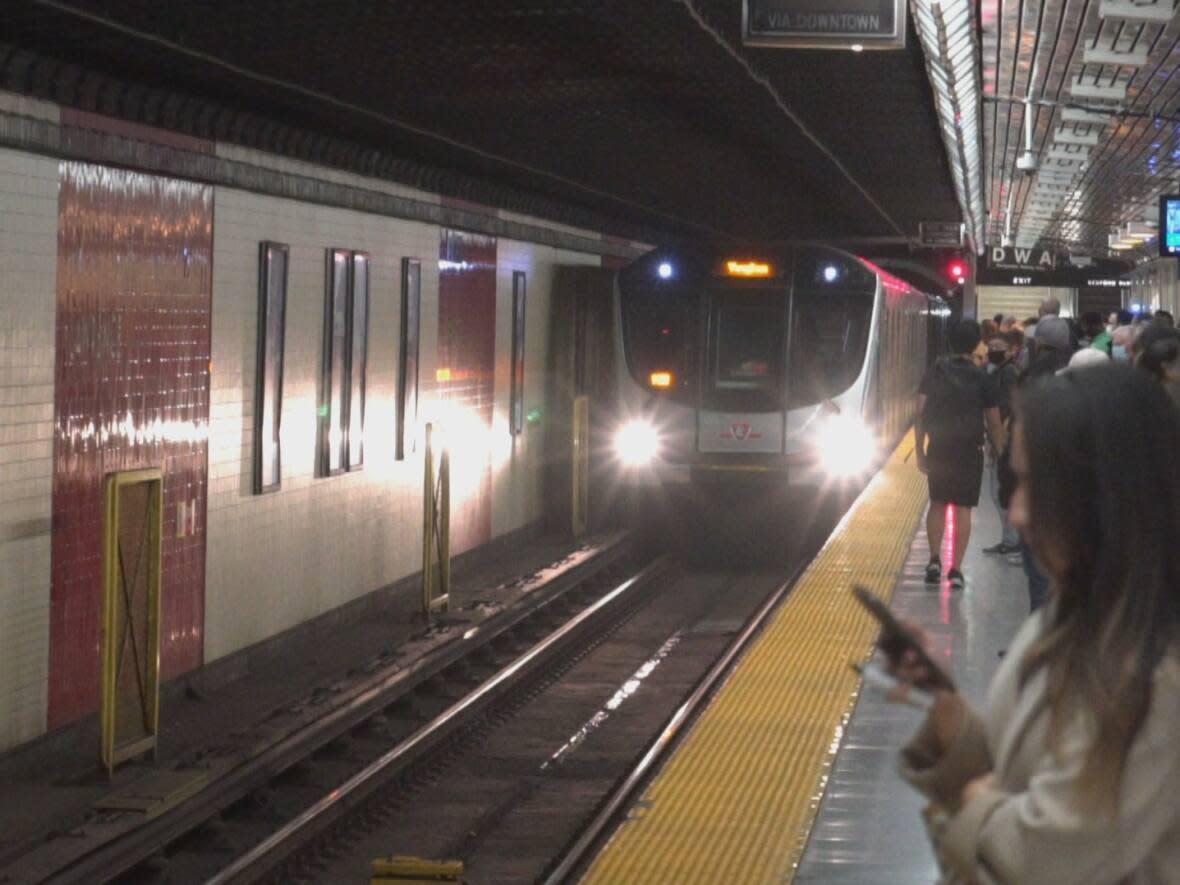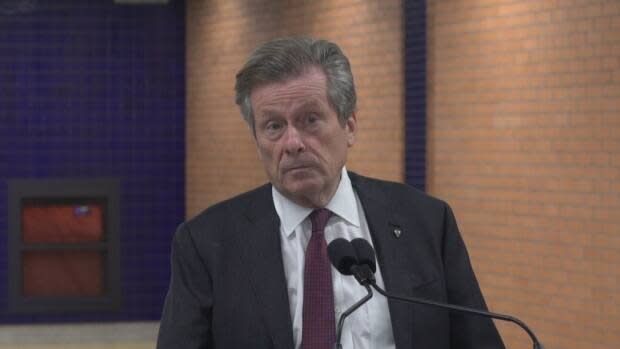TTC completes new signalling system for Line 1

The Toronto Transit Commission says upgrades to its signalling system on Line 1 are finally completed and it expects that the improvements will allow trains to move more people faster.
Toronto Mayor John Tory says completion of the TTC's Automatic Train Control (ATC) signalling system on Line 1, "one of the backbone lines of the system," is a major milestone because it replaces a system put in place in the 1950s.
"This is a very important day," Tory said at a news conference at Lawrence subway station on Thursday morning.
"The bottom line is that it's going to allow trains to travel more frequently and faster and that is going to really help in increasing capacity."
Tory said the completed project is good news for commuters and the city itself.
Before the system was completed, the TTC could run about 25 trains per hour, but with the ATC now in operation, the TTC can now run about 30 trains per hour. A full train can hold 1,000 people..
Tory said that means the TTC can move 33,000 people per hour as opposed to 28,000 people per hour, which Tory said is a 17 per cent increase in the capacity of the TTC to carry people.
"We are working very hard to create a system that is more reliable and that people can find more to their liking," he said.

According to a new release issued by the TTC on Thursday, the signalling system project was completed on schedule in keeping with an updated plan approved by the transit system's board in April 2019.
TTC CEO Rick Leary said at the news conference the work was completed on Saturday and will "provide a more reliable and more frequent service to our customers, which translates to greater capacity."
Because of the scale of the project, the installation and testing process for ATC was completed during closures on weekend and early week nights, the TTC said in the release.
Crews performed special track work in the tunnels, installing thousands of pieces of equipment that included 2,000 beacons, 256 signals, and more than one million feet of cable, the TTC added.
Portions of the TTC's previous signalling system date back to the 1950s, when the subway first opened. These included a "fixed block" signalling system where trains needed to have large gaps between them as they entered and exited each "block".
With ATC, train speed and separation between trains is controlled automatically, through a computerized "moving block" system. The TTC said with the new system, train location can be monitored more accurately, allowing more trains to operate closer together. This change means fewer signal-related delays, the TTC added.

 Yahoo Movies
Yahoo Movies 
